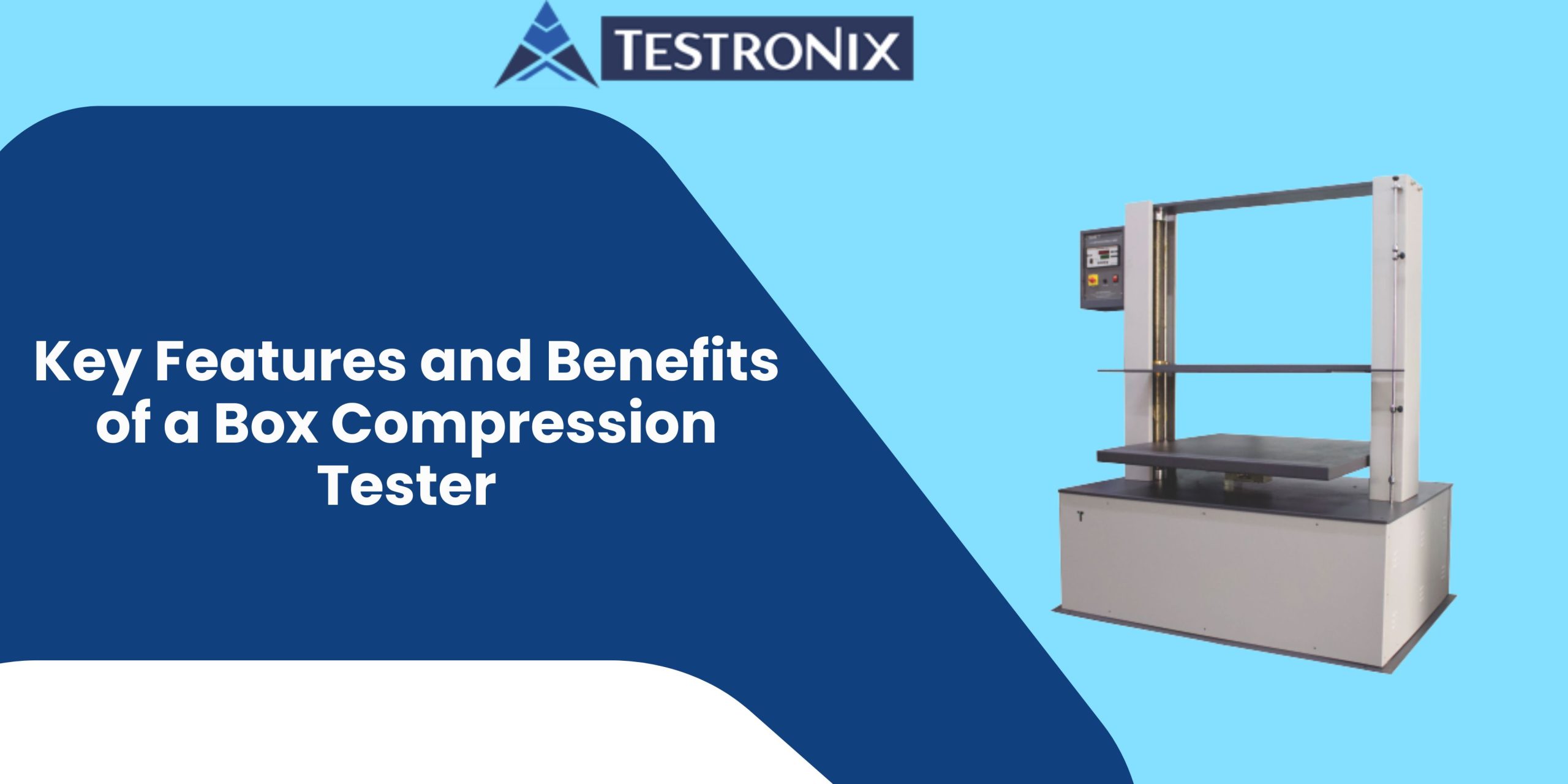In today’s competitive packaging industry, maintaining product integrity during storage and transit is a top priority. With increasing demand for robust packaging solutions, the ability to assess the compressive strength of packaging materials-especially corrugated boxes-has become critical. This is where a box compression test machine plays an essential role.
This article delves into the key features and benefits of a box compression test machine, shedding light on why it’s a must-have in quality control labs across industries like FMCG, pharmaceuticals, e-commerce, electronics, and logistics.
What Is a Box Compression Test Machine?
A box compression test machine is a specialized laboratory equipment designed to evaluate the compression strength of cartons, corrugated boxes, and other packaging containers. The test determines how much load a box can withstand before deforming or collapsing. This directly correlates with its stacking ability, ensuring that it can endure pressure during warehousing and shipping.
Key Features of a Box Compression Test Machine
- Robust Frame and Load-bearing Platform
High-quality machines are built with rugged steel frames and precision-aligned load-bearing platforms. These ensure durability and repeatable test results even under continuous heavy-duty operation.
- Microprocessor-Based Digital Display
Modern machines come equipped with digital indicators that show real-time load values, peak load, and displacement. Some models also include USB or RS232 ports for data transfer to computers.
- Adjustable Compression Speed and Load Range
To accommodate different test standards and product types, compression speed and maximum load settings can be adjusted. This flexibility is crucial for testing boxes of varied sizes and materials.
- User-Friendly Control Panel
Most machines feature an intuitive interface with push-button controls or touchscreen displays, making them easy to operate even by non-technical users.
- Precision Load Cells
Load sensors integrated into the system ensure accurate measurement of the applied force. These are calibrated to deliver highly reliable and reproducible data.
- Safety Interlocks and Overload Protection
Advanced safety mechanisms prevent damage to both the specimen and the equipment. Overload protection stops the test if the force exceeds the preset threshold.
- Compliance with Global Testing Standards
A box compression test machine typically adheres to international testing protocols such as ASTM D642, ISO 12048, or TAPPI T804, making it ideal for global markets.
Benefits of Using a Box Compression Test Machine
- Ensures Product Safety During Shipping
The machine helps manufacturers determine the maximum stacking load their boxes can handle. This prevents damage during storage and transit, protecting the product and brand reputation.
- Optimizes Packaging Design
Accurate compression data enables packaging engineers to redesign boxes for higher strength using less material, reducing packaging costs and improving sustainability.
- Improves Compliance and Quality Assurance
Meeting regulatory and quality benchmarks is easier when you have quantifiable, test-backed results. Compression testing ensures that your packaging meets industry specifications.
- Reduces Returns and Replacements
By ensuring that products reach their destination without damage, businesses can cut down on costly returns, refunds, and replacements due to damaged goods.
- Boosts Consumer Confidence
When customers receive their products in good condition, it enhances trust and loyalty. Consistently high packaging performance adds value to your brand.
- Supports Data-Driven Decisions
Data recorded during compression tests can be analyzed for trends, helping businesses improve packaging processes over time and make informed choices.
- Essential for R&D and Product Development
New packaging materials or box styles can be validated using a compression tester before mass production, minimizing risks and reducing time to market.
Choosing the Right Machine for Your Needs
While investing in a box compression tester, consider your specific application, type of boxes, test frequency, and compliance requirements. It is advisable to purchase from a reputable box compression tester manufacturer that offers customization, after-sales support, calibration, and training services.
Final Thoughts
In the evolving landscape of packaging and logistics, a box compression test machine is not just a quality control tool-it’s a strategic investment. It safeguards your products, enhances customer satisfaction, reduces financial losses, and contributes to sustainable packaging practices. By understanding its features and leveraging its benefits, manufacturers can stay ahead in an increasingly competitive and quality-driven market.

